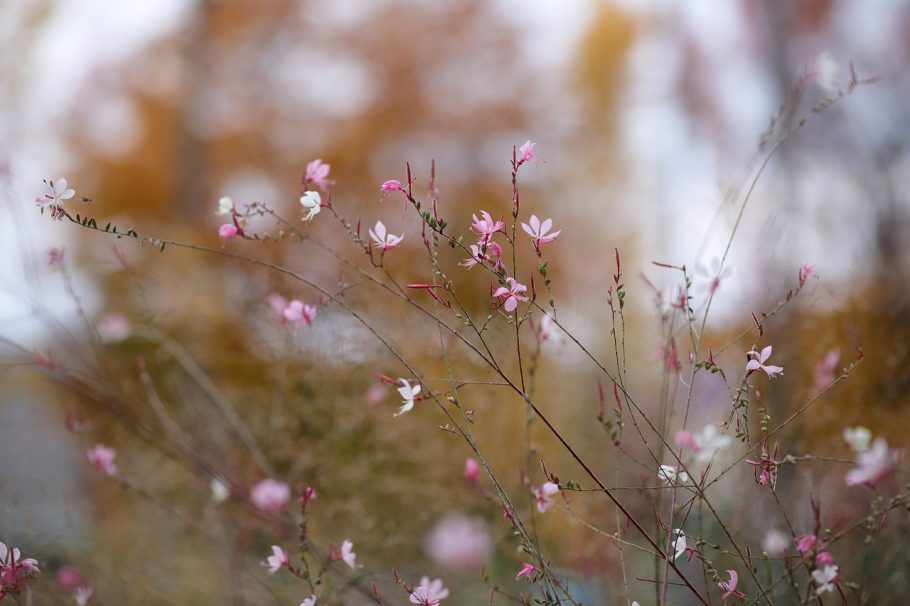The history and culture of cosmos flowers are truly fascinating. These beautiful flowers are believed to have originated in Mexico and South America, where they were grown by the Aztecs for their medicinal properties. Today, they are cultivated worldwide not only for their beauty but also for their symbolic meaning. In many cultures, cosmos flowers symbolize peace, love, and wholeness.
Cosmos flowers come in over 20 different species, each with its unique characteristics and colors. Some of the popular varieties include white, pink, and purple cosmos. Mexican cosmos, for instance, have pink flowers that bloom in the summer months while chocolate cosmos have dark, maroon-colored flowers that give off a chocolate-like scent.
In Mexican culture, cosmos flowers are often associated with the Day of the Dead, and they are used to decorate altars and graves. They are also commonly used as offerings for the Aztec goddess Xochiquetzal. Meanwhile, in Japan, cosmos flowers are known as “akizakura,” which means “autumn cherry blossoms.” They are admired for their delicate beauty and are often featured in Japanese poetry and art.
Overall, cosmos flowers have a rich and intriguing history steeped in symbolism and culture. They continue to capture the hearts and imaginations of people all around the world.
Varieties
Cosmos flowers are incredibly diverse, with over 20 species in existence. Each of these species has its own unique characteristics, ranging from the color of the flowers to the height of the plant itself. Some of the most popular varieties include white, pink, and purple cosmos.
White cosmos are often associated with innocence and purity, making them a popular choice for weddings and other formal events. Pink cosmos, on the other hand, are often seen as symbols of love and affection, while purple cosmos are associated with wisdom and spirituality.
While these three colors are some of the most commonly seen, there are many other varieties of cosmos flowers to choose from. Some species have larger or smaller flowers than others, while others have different petal shapes and textures. In addition to their beautiful appearance, cosmos flowers are also easy to care for, making them a favorite among gardeners.
Mexican Cosmos
Mexican cosmos, also known as Cosmos bipinnatus, are a popular variety of cosmos flowers. They have stunning, pink flowers that bloom during the summer months, attracting bees, butterflies, and other pollinators.
These plants are quite hardy and can tolerate a range of soils and growing conditions, making them an excellent choice for any garden. Mexican cosmos have slender stems and delicate, feathery leaves that add a touch of elegance to any arrangement.
Mexican cosmos are often used as cut flowers due to their long vase life and vibrant colors. They also make excellent border plants or can be used to fill in gaps in flower beds. In addition, Mexican cosmos are easy to grow from seeds and can be started indoors or directly sown in the garden.
Their popularity in Mexico is no surprise, given their beauty and cultural significance. Mexican cosmos are often used in Day of the Dead ceremonies and are considered to be a symbol of life and death.
If you’re looking to add a touch of elegance and vibrancy to your garden or floral arrangements, Mexican cosmos are an excellent choice.
Chocolate Cosmos
Chocolate cosmos are a unique variety of cosmos flowers that are known for their velvety, maroon-colored petals and chocolate-like fragrance. Native to Mexico, they are often grown as ornamental plants and are prized by gardeners for their beauty and scent.
These flowers are relatively small, typically growing to a height of about 2 feet. They thrive in full sun and well-draining soil, and are known to attract pollinators such as bees and butterflies. In addition to their ornamental value, chocolate cosmos were traditionally used by the Aztecs for medicinal purposes, particularly for their anti-inflammatory properties.
Despite their popularity, chocolate cosmos are actually quite rare and are considered to be an endangered species. This is in part due to their unique chocolate fragrance, which makes them a target for collectors and enthusiasts. As a result, it is important to protect and preserve these beautiful flowers for future generations to enjoy.
Cultural Significance
The beautiful cosmos flower is rich in cultural significance, particularly in Mexico where it is associated with the Day of the Dead celebration. This annual holiday is a time when friends and family gather to remember and celebrate the lives of loved ones who have passed away. During this time, cosmos flowers are commonly used to decorate altars and graves, representing a symbol of life, death and rebirth.
Additionally, the cosmos flower plays a significant role in Aztec mythology where it is associated with the goddess Xochiquetzal. As a result, cosmos flowers are often used as offerings to this goddess, who is widely regarded as the protector of young mothers and newborns.
The use of cosmos flowers within the culture of Japan is also noteworthy. In Japanese, they are known as “akizakura”, which translates to “autumn cherry blossoms”. These flowers are admired for their delicate beauty and are often featured in Japanese poetry and art.
Overall, the cosmos flower is more than just a beautiful ornamental plant. It holds deep cultural significance to various groups around the world, each with their own unique interpretations and customs.
Japanese Culture
akizakura, which translates to “autumn cherry blossoms.” They are admired for their delicate beauty and are often featured in Japanese poetry and art. In Japan, cosmos flowers are also seen as a symbol of harmony and order, and are often used in traditional tea ceremonies. The vibrant pink and purple varieties are particularly popular and can be found in gardens and parks throughout the country. Japanese florists often use cosmos in arrangements to create a calming and serene atmosphere. Additionally, the cosmos flower has inspired many Japanese artists, including painter and printmaker Yumeji Takehisa, who often incorporated them into his artwork. Overall, the cosmos flower has become an important part of Japanese culture, admired for its tranquil beauty and cultural significance.
akizakura,
also known as autumn cherry blossoms, hold a special place in Japanese culture. These delicate flowers are admired for their stunning beauty and are often featured in traditional Japanese art and poetry. They bloom in the fall season and are seen as a symbol of the changing of the seasons. During the annual Cosmos Festival in Japan, people gather to admire the beauty of the cosmos flowers and celebrate their cultural significance. In Japanese mythology, the cosmos flower is often associated with love, harmony, and joy. Overall, the akizakura or cosmos flower holds great significance in Japanese culture and adds an undeniable charm to the autumn season.
which means
‘ canlı bir otobüs şirketinin sunduğu bir hizmettir. Bu hizmet sayesinde, yolculuk öncesi araca binmeden önce yolcuların otobüsün içini ve dışını incelemesi mümkün olur. Bu sayede, yolculuk sırasında beklenmedik sürprizlerle karşılaşma olasılığı azalır. Aynı zamanda, bu hizmet aracın ne kadar temiz olduğunu, rahat oturma alanlarına sahip olup olmadığını, lavabo ve yiyecek-içecek hizmetleri gibi diğer olanakları da gösterir. Akizakura hizmeti sayesinde, yolcuların konforlu bir yolculuk yapmaları sağlanır ve seyahat öncesi kaygıları azaltılır. Bu hizmet aynı zamanda, otobüs şirketleri tarafından sunulan bir rekabet avantajıdır ve müşterilerin şirketleri seçerken tercih nedeni olabilir.
autumn cherry blossoms.
Autumn is a time of transition and change, when the leaves start to turn vibrant shades of red, yellow, and orange. During this season, the cosmos flower comes into bloom, with its delicate petals adding a touch of beauty to the changing landscape. In Japan, the cosmos flower is known as “akizakura”, or “autumn cherry blossoms”.
Despite its name, the cosmos flower is not related to the cherry blossom tree. However, just like cherry blossoms, the cosmos flower is admired for its delicate beauty and is often featured in Japanese art and poetry. It is considered a symbol of elegance and purity, and is said to represent the fleeting nature of life.
In Japan, the cosmos flower is often grown in gardens and used for decorative purposes. Its vibrant colors and delicate petals make it a popular choice for floral arrangements, and it is often paired with other flowers such as chrysanthemums and Japanese anemones. Additionally, the cosmos flower is used in traditional Japanese medicine for its soothing properties, and is said to have a calming effect on the mind and body.
Overall, the cosmos flower holds a special place in Japanese culture, representing the beauty and impermanence of life. Its delicate blooms bring joy and peace to those who admire them, and serve as a reminder to cherish each moment as it passes.
They are admired for their delicate beauty and are often featured in Japanese poetry and art.
Cosmos flowers are highly admired in Japanese culture, where they are known as “akizakura,” which means “autumn cherry blossoms.” These delicate and beautiful flowers are often featured in Japanese poetry and art, and their vibrant colors and symmetrical shapes make them a beloved symbol of autumn.
In Japan, cosmos flowers are often found in traditional gardens and are a popular choice for floral arrangements. They are also viewed as a symbol of hope and are often given as gifts to those who are experiencing difficult times.
Cosmos flowers are also believed to have medicinal properties, and are often used in traditional Japanese medicine. They are said to have a calming effect on the mind and body, making them a popular choice for those seeking relaxation and stress relief.
Overall, the cultural significance of cosmos flowers in Japan is deeply rooted in their delicate beauty and their ability to bring a sense of tranquility and hope to those who admire them.





